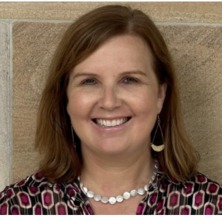
By Thu Pham, Peter Anderson, C4IE member Angela Baeza Pena and Levon Blue
“Debt relief is welcome, but it won’t keep students in programs where they feel unsafe, unsupported, or invisible.”
The Albanese Government’s recent move to wipe out 20% of student HECS-HELP debt is a welcome financial reprieve, a symbolic and practical gesture recognising the burden students carry. But for many Indigenous higher degree by research (HDR) students, debt is only part of the challenge. Two separate research projects — one that surveyed students, and another that surveyed supervisors — point to the same pressing concern: mental health and wellbeing.
The policy context
On July 23, 2025 the Universities Accord (Cutting Student Debt by 20 per cent) Bill 2025 was introduced into Parliament to reduce Higher Education Loan Program (HELP) debt by 20% and making the HELP loan repayment system fairer by increasing the amount people can earn before they are required to start repaying their loan and making the size of their compulsory repayments smaller.
While the debt relief is welcome, financial support alone won’t fix the deeper issue facing Indigenous HDR students. If the Federal Government is committed to achieving the Universities ACCORD goals, including lifting tertiary attainment rates, it must listen to what both students and supervisors are saying: the mental health and wellbeing of Indigenous HDR students must be a national priority.
Findings from two distinct studies clearly indicate a shared concern: both supervisors and students consistently identify the need for enhanced and culturally appropriate mental health and wellbeing support as critical to student success.
A shared concern: mental health and wellbeing
In a study involving 33 supervisors of Indigenous HDR students, concerns about mental health, wellbeing, and the risk of non-completion emerged repeatedly. Supervisors expressed how life challenges – often exacerbated by racism, intergenerational responsibilities, and lack of support, impact Indigenous students’ capacity to complete their research degrees.
“Because it’s a long journey and usually many unintended events happen in the students’ lives, some Indigenous HDR students struggle to continue even though they genuinely want to.” — Supervisor 14
Another supervisor noted the stress associated with fear of failure, saying students often lack awareness or avenues to address their difficulties.
“The stress levels and ability to complete work in a timely fashion is a concern, particularly when dealing with the inevitable pressures HDR students experience.” — Supervisor 17
The burden of cultural and family obligations was also a recurring theme:
“Especially if they have additional personal demands such as poor health or looking after relatives/community commitments.” — Supervisor 20
What came through clearly was this: supervisors care, but many feel underprepared and unsupported in how to respond meaningfully to these challenges.
The message is clear. Financial hardship matters, but it is often entangled with mental health stressors, institutional invisibility, and cultural unsafety.
What students say
The second study surveyed 2,528 Australian graduates — including 308 Indigenous graduates — to identify the social determinants of higher degree completion. Health and wellbeing was the top factor impacting all students’ completion rates. For Indigenous students, mental health was the most cited reason for considering withdrawal.
“Struggling to maintain work-life balance, struggling with self-doubt, mental health, and difficult living situations.” — Indigenous graduate
“I was badly affected mentally by life in general.”
“It got hard with no support… I had to survive without income until I got a job while studying.”
These testimonies echo the supervisors’ concerns. Again, the message is clear. Financial hardship matters, but it is often entangled with mental health stressors, institutional invisibility, and cultural unsafety.
Supervision is a critical lever
Supervisors are well-placed to make a difference, but they need the tools, training, and institutional support to do so. To build a research culture where Indigenous students thrive, it is critical for universities and the government to ensure:
- Culturally safe and Indigenous-led professional development for supervisors
- Training in culturally responsive mentoring and mental health literacy are in-place
- Structural and policy support that enables supervisors to support students holistically
So what?
Indigenous HDR students are not withdrawing because they are incapable or lack motivation; they are leaving because the system remains culturally unsafe, isolating, and mentally taxing. Financial relief helps, but without reforming the conditions that affect students’ mental health and wellbeing, it is like offering a bandaid for a deep wound.
This has serious implications for the government’s broader reform agenda.
For the Universities Accord: The Accord sets ambitious goals to increase tertiary attainment, improving completion rates, and enhancing equity and access for underrepresented groups. But these goals won’t be achieved if Indigenous HDR students continue to feel unsupported and unsafe. Embedding culturally grounded mental health and wellbeing support into HDR programs is not optional. it’s essential if the Accord is to succeed.
For Closing the Gap: The National Agreement on Closing the Gap commits to increasing the number of Aboriginal and Torres Strait Islander people with higher education qualifications. But the current system still fails to create enabling environments for Indigenous researchers to flourish. Mental health, cultural safety, and Indigenous leadership must be recognised as central to both participation and retention, not peripheral concerns. If these factors aren’t addressed, the promise to Close the Gap in education will remain unmet.
For Government Investment: Billions are being invested to make higher education fairer and more accessible. But unless policies address the lived experiences of Indigenous HDR students — particularly mental health and wellbeing — these investments will fall short of their transformative potential. Mental health support, culturally safe supervision, and Indigenous-led reform are not add-ons. They are critical infrastructure for equity.
Call for action
Both supervisors and students are pointing to the same problem: mental health and wellbeing are critical to HDR success. If left unaddressed, these challenges will continue to undermine policy goals, no matter how generous the financial incentives.
Debt relief is a start, but it’s not enough. Real reform listens, learns, and acts on what Indigenous researchers and their allies already know.
The full article is also available on AARE: Debt relief is a start but Indigenous research students need other support now – EduResearch Matters
| Dr Thu Pham is a researcher at the Indigenous Research Unit, Griffith University. Her work focuses on Indigenous higher education and supporting Indigenous HDR student projects. Her research explores how university leadership can enhance Indigenous student success by improving student experiences and outcomes. She is on LinkedIn. | |
| Professor Peter Anderson hails from the Walpiri and Murinpatha peoples of the Northern Territory and is the incoming Pro Vice Chancellor (Indigenous) at the University of New England. His research encompasses Australian Indigenous education, educational systems, curriculum, and pedagogical interventions, alongside the intersecting relationships with Indigenous peoples both globally and domestically. He is on LinkedIn. | |
 |
Dr Angela Baeza Pena is a lecturer at Queensland University of Technology. She is Diaguita First Nation from Chile. Her work focuses on Indigenous education, teacher professional development, and culturally responsive curriculum design. Her research explores the experiences of Indigenous communities and educators in rural and remote contexts, with a particular emphasis on school-community partnerships and the integration of Indigenous knowledges into mainstream education. She is on LinkedIn. |
 |
Associate Professor Levon Blue is the HDR Coordinator at The University of Queensland in the Office of the Deputy-Vice-Chancellor Indigenous Engagement. Her PhD focused on financial literacy education practices in a First Nation community in Canada. She is a member of Beausoleil First Nation in Canada. Her research area includes financial literacy education and higher education with Indigenous peoples. She is on LinkedIn. |